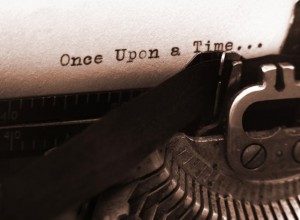 “Design is an opportunity to continue telling the story, not just to sum everything up.”
“Design is an opportunity to continue telling the story, not just to sum everything up.”
~ Tate Linden
Did you happen to catch the first 2 parts of my the Art of Design article series?
4 Stages of the Design Process and 5 Essential Design Tools
I covered:
- Craft Skills and Techniques
- Drawing Ability
- Sketchbooks
- Idea/Inspiration Notebooks
- Sample Journal
- Asking all the questions
- Thinking Laterally
- Consider the Elements
- Apply the Design Development
Part 3 of the series of articles on the Art of Design:
5 Important Considerations for Great Design:
- Inspiration
Now let’s talk about inspiration. It can come from many things, people, experiences, etc. Journaling will help identify these sources of inspiration. Once we’ve identified the inspiration, we need to analyze it. Why does it inspire you? What moves you about it and creates a reaction? Is it an emotion, a feeling, a reaction (need to touch), etc?What’s the story?
- Clearly Defined Concept
Once you’ve got an inspiration, you need to take some time to define your concept. This will prevent the outcome from being an accidental design. Keep the design simple. It’s easy to make it complicated or overworked. Focusing on core concepts instead of small details will keep your vision clear. KISS! - Brainstorming and Research
Again these steps in developing the design concept are about exploration. Sketching, thinking laterally, graphing out your ideas (think bubble graphs), researching out materials, and deciphering what to keep and what to reserve for another project are all key skills to good design. In design this is referred to as editing. It is an important skill to have and learn to refine. - Samples and Test Pieces
Often with metal clay, for example, designers will work out ideas in polymer clay. This is referred to as model making. This clay can be sanded (with a mask), carved, etc.When first exploring a new material, for example BronzClay, it’s a good idea to keep a log of all experiments. It is helpful to keep notes on actual steps taken during fabrication, sanding, thicknesses, materials used, firing times, ramps, hold times, methods, etc. Celie Fago recommends photocopied logs of before and after firing pieces. This way you can note shrinkage and possible reasons for warpage etc.
- Fabricating
Finally you’re ready to fabricate your final design! By spending time working through the design process you’ve saved yourself time and energy. You’ve hopefully avoided wasting material and the most expensive cost factor which is labor. Your design will be stronger and clearer by spending the time to work through these steps. Plus if you decide to repeat the piece or put it into production, you’ll have a recipe card to review for areas of improvement or changes without reinventing the wheel!
Don’t forget to leave a comment and get entered to win a F*R*E*E give-away from Whole Lotta Whimsy! Drawing is February 15th, 2012!






Thank you such good articles. I have been adrift lately and needed a mentor to help direct me back to the art.
Your articles give much food for thought. Even though I am primaryly a fiber artist and love to make art dolls, jewelry making is my next passion. Although I find great ideas in working experimentally the processes you teach help focus and control the art process.
This is a great series! Thank you Tonya for clear and simple steps to help us improve our design process and its outcome!
My only problem is that when I start out with a drawing of a design, by the time I’m finished, some other inspiration has popped in and changed it into something completely different – not a bad thing, but it’s gotten me out of hte habit of drawing up designs. I usually put the stones and silver in front of me, and it “tells” me when it’s done. I go into another world and become one with the stone and metal – pure peace!
As always, thanks for your insightful, helpful hints. The best one for me is “KISS.” It is easy for me to over-think a project. The outcome is much better when I keep it simple.